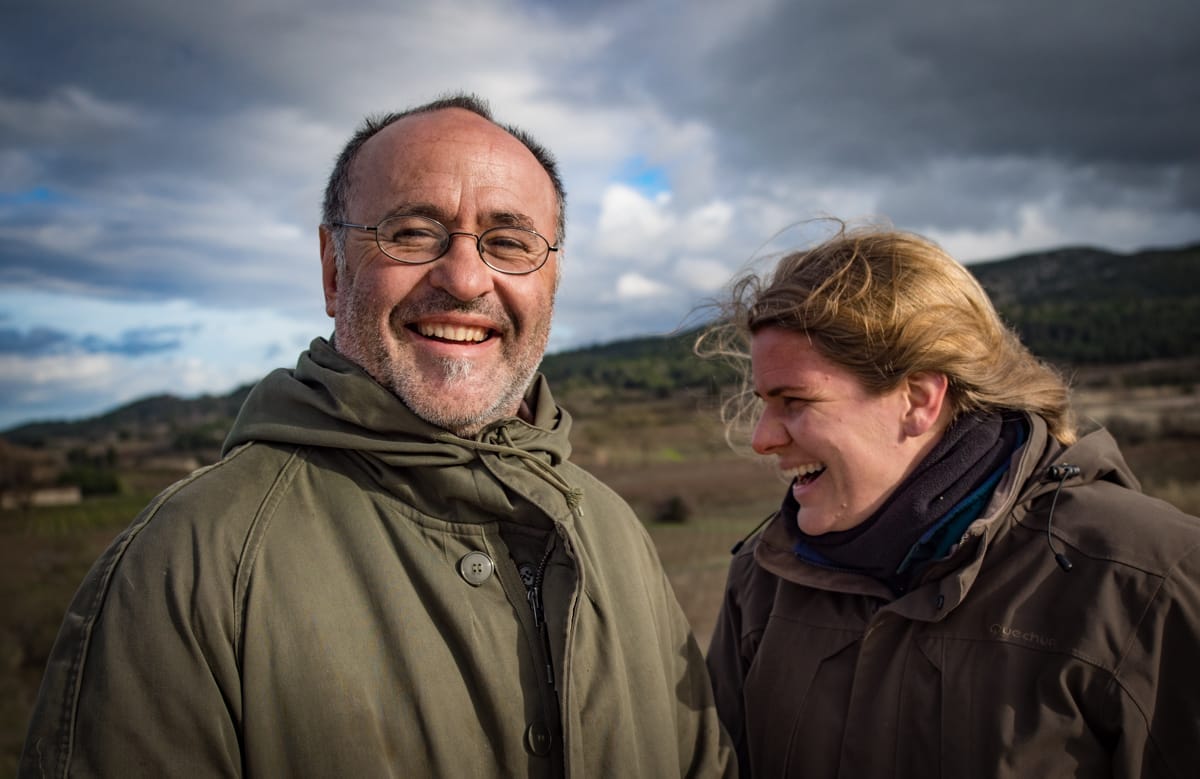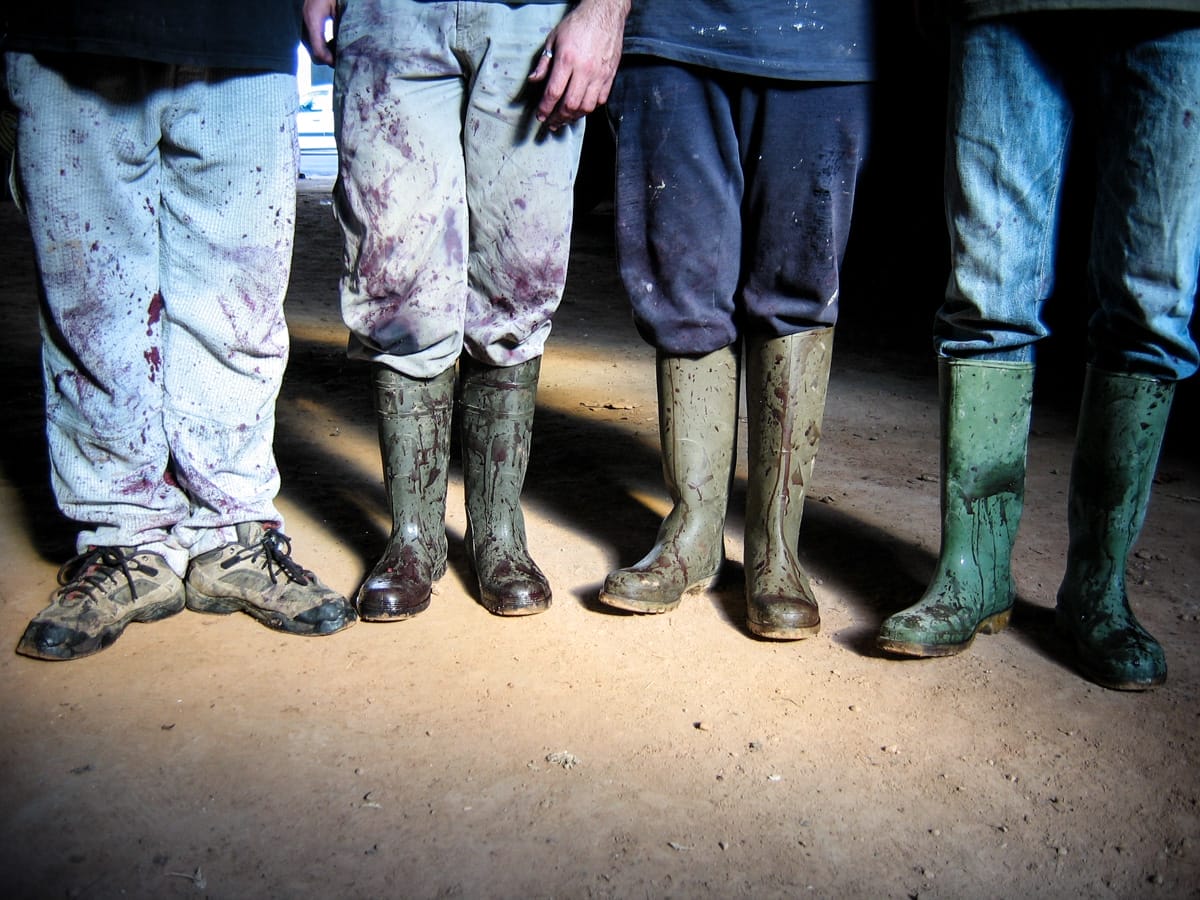This is my story and I’m stickin’ to it
Colline de l’hirondelle (Swallow Hill) is where we live and make our wine on a hill surrounded by vineyards just outside the small French village of Douzens.
We chose the literal path of naming the winery for what was actually there: a hill (“Colline” in French) overlooking vineyards actually called “The Swallow” on the town land registry. We figured that at least people in our village of 800 would be able to find us. The fact that the name was completely unpronounceable in English, my native language, didn’t occur to me at the time.
I am from California, and the first thing people ask me, before the wine, the vineyards, the tasting… is “How did you get here?” So this is how: When I arrived in France in 2001, I was fresh out of university in California, and thinking “year abroad, open horizons, cultural enrichment,” and then back home. I almost immediately met Didier at Cammas, a massive stone farm, artist’s residence, collective, beautiful, romantic, I could go on… There were dinners at long tables with lots of people from all over eating lots of delicious French food.. and so I stayed – who wouldn’t?
Didier, the other half of this partnership, was born and raised in Douzens, population 800. He is the son of wine growers, like almost everyone else in the village. His roots in the immediate area of Douzens can surely be traced back to the Middle Ages.

In 2009 when Didier had finished converting part of an old barn into a winery we did what good French children do and moved back to the village. Now I’m known in Didier’s hometown as “the daughter-in-law Ferrier” or sometimes just “l’Americaine,” which I’m starting to realize are terms of endearment.
So there you have it. If you ever find yourself Douzens don’t hesitate to drop in. If you ask for Colline de l’hirondelle there are 800 people who can point you in the right direction…
Where to find our wine
in France an abroad
Organic Agriculture

We chose to farm our vineyards organically because it allows us to produce quality grapes while working in harmony with our convictions about protecting the natural environment. It’s also the only kind of farming we’ve ever done. Our approach to growing grapes and making wine is hands-on and small-scale which favors manual work in the vineyards, the use of natural products, and common sense. Since we started converting the vineyards to organic farming we have seen birds and insects return and the soils slowly come back to life. We can also harvest delicious wild arugula and other lettuces in the vineyards, which in itself is reason enough for me to go organic.
La Joupatière

The oldest vineyard in the village! Planted at the end of the 19th century, it miraculously escaped phylloxera and the uprooting of old vines that has plagued the Languedoc; this tiny one-acre plot is a conservatory of rare and disappearing varieties. A local vine scientist has identified the following 13 varieties: Carignan noir, Grenache noir, Cinsault noir, Mourrastel Boucher noir, Rivairenc noir, Grand Noir de la Calmette, Mourvèdre noir, Terret noir, Terret gris, Terret blanc, Olivette blanche, Chasselas doré, Valencin rose and two mysterious varieties are still unidentified.
Hand-harvesting

For all of our red wines. Somehow at the end of the day the grapes are harvested, sorted, and put into vats even though between a copious breakfast in the vineyard and a big barbecue at lunch I feel like all we do is eat!! I’m told that this is tradition and I would never want to get in the way of that… Making wine is something we have come to gradually by tasting lots of wine and asking lots of questions. We approach making wine as a natural process, but one in which man is an integral part. Once the grapes reach the vats we adapt our approach to fit each variety, vintage and the evolution of each wine.
Winery on the Hill

When the grapes reach the winery we follow their lead, not trying to make the same exact wine every year, but to make that year’s fruitiest Cocolico, or spiciest Oiseau blend. We bottle all of our wines when we taste that they are ready then age them in bottles several years. That means we do the difficult work of laying the wine away for you and only release our wines when they are ready to drink.
Bottle aging
Our bottles are aged within the stone walls of what was once the village inn’s coach house. This beautiful stone building has been in Didier’s family for generations and has witnessed Grandpa Marty’s production of inventive house cocktails as well as Mamie Jeanne’s chicken and rabbit raising enterprise. One particularly harsh winter in the 1950’s the bumper cars for the annual village festival were set up complete with lights and sound in what is now a peaceful barn.
